Streptavidin S4762 can be reconstituted in H₂O or 1 mM NaHCO₃ at twice the final concentration and then diluted with an equal volume of 2X buffer. For biotin-antibody assays, it is typical to use 1X PBS as the solvent. When diluted with H₂O, 2X buffer should still be used. The term "2X buffer" refers to the buffer being used at double the normal strength and does not specifically refer to an SDS buffer.
S4762
Streptavidin from Streptomyces avidinii
essentially salt-free, lyophilized powder, ≥13 units/mg protein
Select a Size
Select a Size
About This Item
Recommended Products
form
essentially salt-free, lyophilized powder
Quality Level
specific activity
≥13 units/mg protein
mol wt
~60 kDa
capacity
4 mol/mol (Biotin)
application(s)
research pathology
storage temp.
−20°C
Looking for similar products? Visit Product Comparison Guide
General description
Application
Preparation Note
Disclaimer
Storage Class Code
11 - Combustible Solids
WGK
WGK 3
Flash Point(F)
Not applicable
Flash Point(C)
Not applicable
Personal Protective Equipment
Choose from one of the most recent versions:
Certificates of Analysis (COA)
Don't see the Right Version?
If you require a particular version, you can look up a specific certificate by the Lot or Batch number.
Already Own This Product?
Find documentation for the products that you have recently purchased in the Document Library.
Customers Also Viewed
-
Is there a protocol for diluting the streptavidin S4762? For biotin-antibody assays, what solvent is typically used—DI water or 1X PBS? The documentation mentions, "Reconstitute in H₂O or 1 mM NaHCO₃, pH 9.0 at twice the final concentration and then dilute with an equal volume of 2X buffer." If diluted with H₂O, should 2X buffer still be used? Also, what does 2X buffer mean? Is it an SDS buffer?
1 answer-
Helpful?
-
-
Does S472-5MG contain 5 mg of Streptavidin alone, or does it also include other materials? What does the %protein test within the CoA involve, and why is there a range of acceptance values? Also, how long is Streptavidin allowed to solubilize when preparing the 1mg/mL for the solubility quality test?
1 answer-
S4762-5 mg consists of 5 mg of the Streptavidin protein, and with overpack, it amounts to 5.24MG protein. The protein assay, conducted by a proprietary method developed by Sigma, is performed to assess whether the product has been adequately isolated and the subsequent affinity purification process has yielded at least 65% Streptavidin. For this product, solubility above 1 mg/mL is not tested, and the QC testing is carried out at 1 mg/mL. The solubility time is typically not recorded, but generally, this product dissolves in a few minutes.
Helpful?
-
-
how can streptavidin bond on nc membrane?
1 answer-
This product binds to Biotin. FAs mentioned on the Certificate of Analysis : Streptavidin ≥ 18 U/mgP in one lot. One unit will bind 1.0 ug biotin. According to the method described by: Green N.M., Methods in Enzymology, 18, 418 (1970).
Additionally, the following information below may be helpful: https://www.researchgate.net/post/How-could-streptavidin-bind-tightly-to-the-nitrocellulose-membrane-without-using-biotin
Helpful?
-
-
Why this diferent between https://www.sigmaaldrich.com/NL/en/product/sigma/s4762 and https://www.sigmaaldrich.com/NL/en/product/sigma/s0677.
1 answer-
The major difference between product S4762 and S0677 is that product S4762, is not a recombinant and is essentially salt-free while product S0677 is recombinant, expressed in E. coli.
For product S4762, commercial preparations of streptavidin were analyzed by isoelectric focusing combined with an affinity-based protein blot using biotinylated, protein-saturated nitrocellulose. This product has an approximated molecular weight equal to 60,000 kDa. Dependent on the preparation, seven to sixteen streptavidin forms were found with isoelectric points ranging from 5 to 8.
For product S0677, the protein is free of carbohydrate. The four subunits consisting of molecular weight of approx. 13,000 Da, each containing a single biotin-binding site. Each subunit has six tyrosine residues. The recombinant streptavidin from E. coli is the natural protein. There have been no deletions or additions. It is unknown if the protein for this product has the N-terminal methionine that is often found in recombinant proteins produced in E. coli.
It appears the recombinant Streptavidin starts at amino acid residue 16-133 (with a mutation at residue 120)Helpful?
-
-
How do I determine how many units are in a particular amount of Product No. S4762?
1 answer-
On the Certificate of Analysis for the product, the activity of the product per milligram can be found. This number is specific for your lot, and you must look up the Certificate of Analysis by the lot number for your particular batch of product. From this number, you can calculate how many units are in a particular weight of your product by multiplying the weight of the product by the units/mg of the product.
Helpful?
-
-
What is the affinity of streptavidin (e.g., Product No. S4762) for biotin?
1 answer-
Streptavidin binds the small molecule biotin with extraordinary affinity. The dissociation constant is KD = 4 × 10-14 M, according to N. M. Green, Methods Enzymol., 184, 51 (1990).
Helpful?
-
-
What is the Department of Transportation shipping information for this product?
1 answer-
Transportation information can be found in Section 14 of the product's (M)SDS.To access the shipping information for this material, use the link on the product detail page for the product.
Helpful?
-
-
In what is Product No. S4762 soluble? And how do you recommend storing solutions of streptavidin?
1 answer-
This product is soluble in water or aqueous buffer (i.e., PBS) at 1 mg/mL. Solutions in PBS or water can be stored for several months at 4°C, or for more than a year as frozen aliquots.
Helpful?
-
-
What is the expiration date of the Product No. S4762 in my possession?
1 answer-
Product No. S4762 has not been assigned an expiration date by Sigma. Streptavidin is stable. S4762 has been assigned a QC Release date as well was a Retest Date. These dates can be found on the Certificate of Analysis. The QC Release Date indicates the last date that the lot was tested and found to meet specifications, and the Retest Date indicates the next date that the lot will be tested, assuming that enough of the lot remains to perform the testing.
Helpful?
-
Active Filters
Our team of scientists has experience in all areas of research including Life Science, Material Science, Chemical Synthesis, Chromatography, Analytical and many others.
Contact Technical Service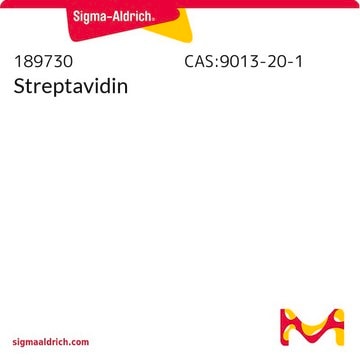


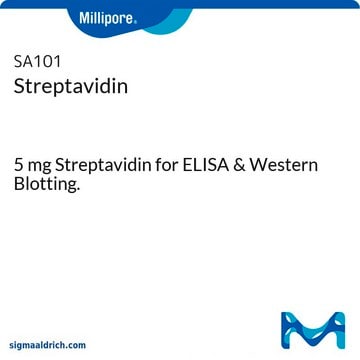


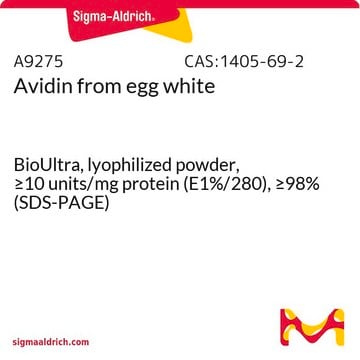


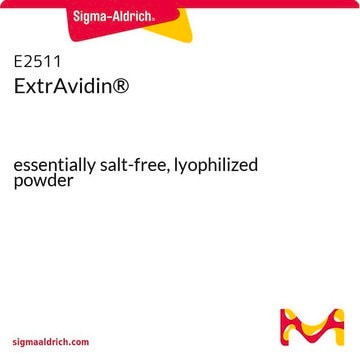

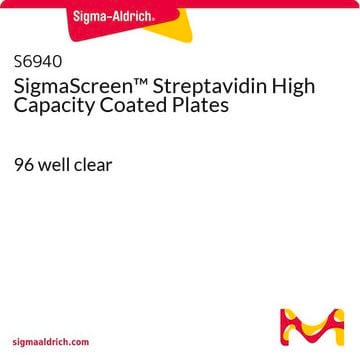
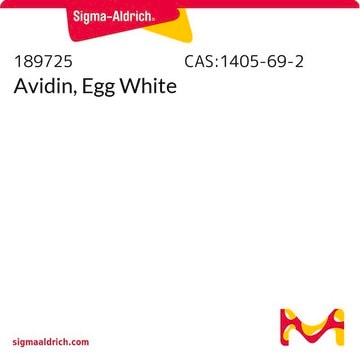

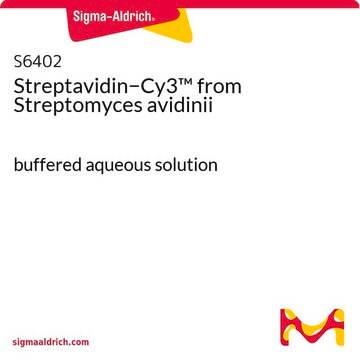
![[Nle4,DPhe7]-Biotinyl-α MSH](/deepweb/assets/sigmaaldrich/product/images/175/962/1f49481c-d81e-49b6-83fc-9490335deb42/640/1f49481c-d81e-49b6-83fc-9490335deb42.jpg)
